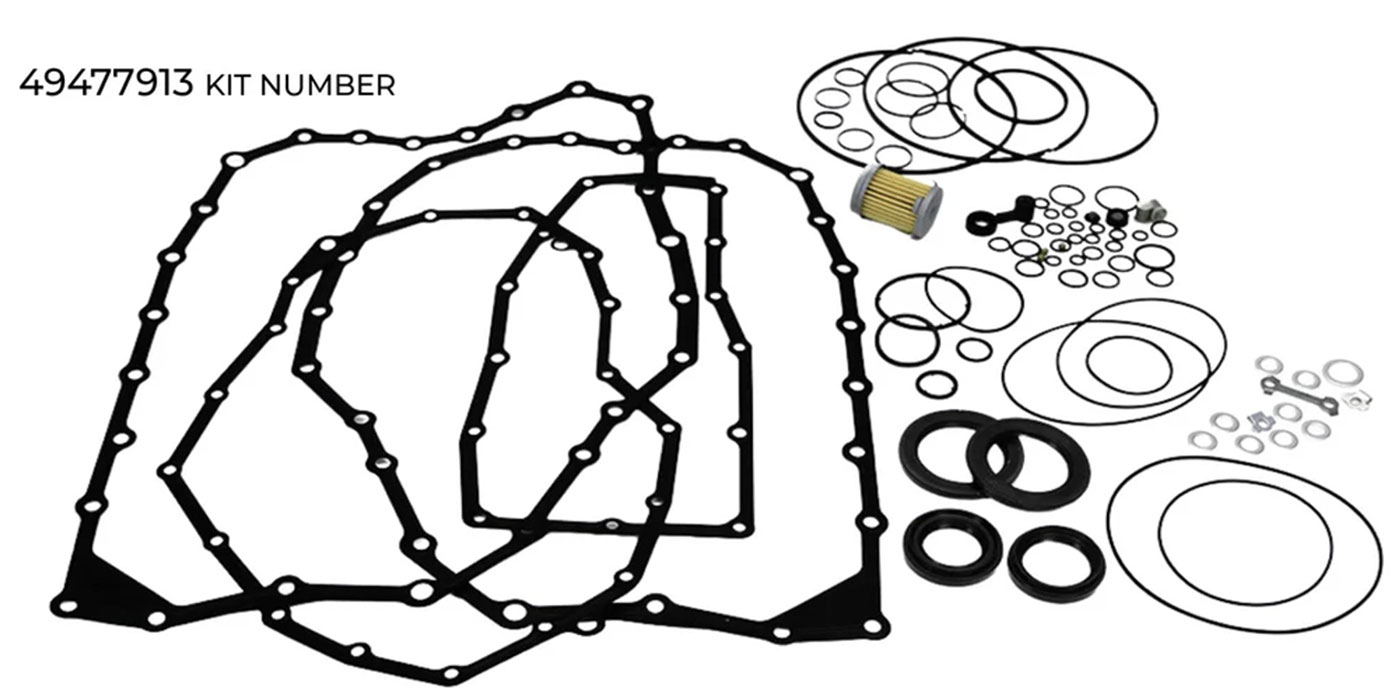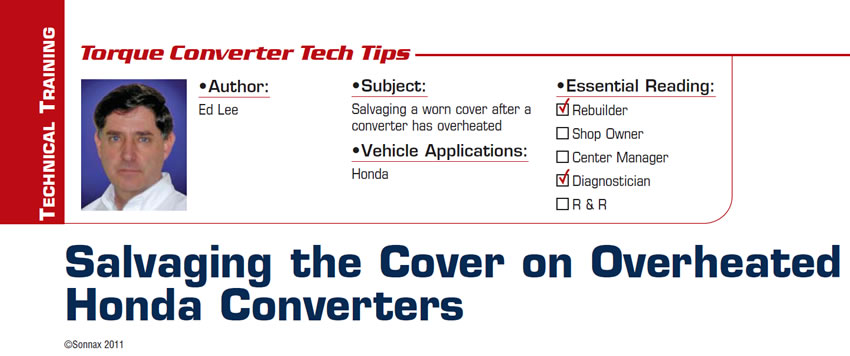
Torque Converter Tech Tips
- Subject: Salvaging a worn cover after a converter has overheated
- Vehicle Application: Honda
- Essential Reading: Rebuilder, Diagnostician
- Author: Ed Lee
In the February 2010 Transmission Digest article titled “Honda 740 Codes: Torque-Converter Forensics” you learned that insufficient clearance between the TCC piston and cover bearing could cause less TCC-piston clamping force and damage to the cover. Most lockup converters have about 0.080-0.090 inch clearance between the piston and cover in this area to prevent contact when the piston deflects during TCC apply. On some Honda converters this clearance is as little as 0.045 inch. Any machining of the piston or reaction surface of the cover makes this clearance even less, but even normal friction-material wear can reduce the clearance to dangerous levels.
The normal hydraulic forces within the torque converter push the TCC piston toward the cover; the TCC piston reacts like a “normally on” pressure switch. It is normally pushed to the apply position and is released only when the flow of TCC-release/charge oil between the piston and cover floats the piston off the cover.
In the September 2011 Transmission Digest article titled “Overheated Honda Converters/740 Codes” you learned that, under certain conditions, the flow of TCC-release/charge oil is low enough to allow the TCC piston to drag on the cover. When the TCC piston is dragging on the cover, heat is being generated and friction-material wear is accelerated, leading to the 740 code. One area of secondary damage to the overheated converters occurs when the TCC piston contacts the outer race of the bearing that rests in the cover. Figure 1 shows the wear marks and the amount of heat generated.

Figure 2 shows that the lip of the bearing race in this cover protrudes about half of the normal 0.030 inch.
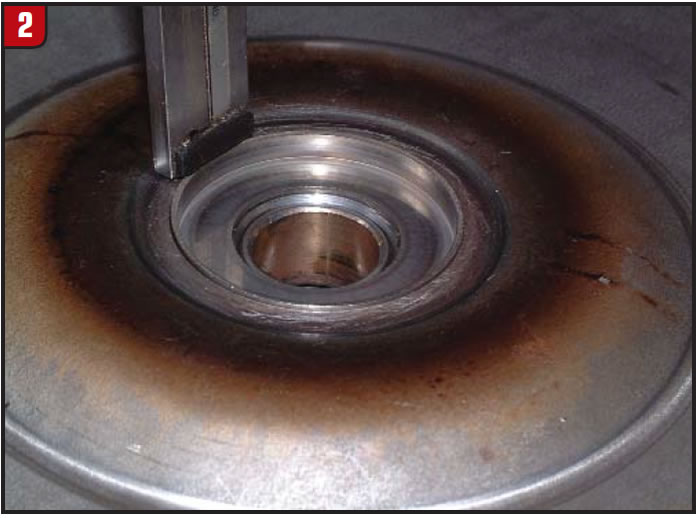
Figure 3 is an extreme case where the lip of the bearing race is recessed about 0.005 inch into the cover.
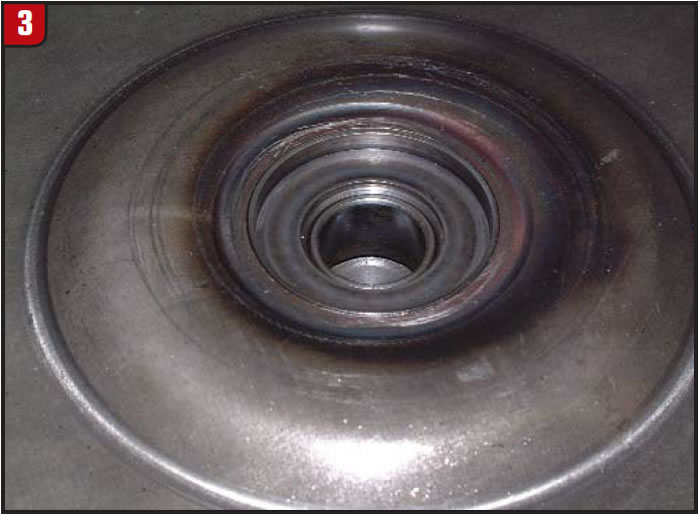
Since the turbine hub rides against this bearing, the overall height and clutch-release clearance of the converter are affected by the wear. If the converter were rebuilt without any modifications, the proper clutch-release clearance of 0.030-0.035 inch could not be achieved. Many shops have found that when the cover is worn to this extent, the required machine work is too expensive to salvage the cover.
Fortunately, there is an inexpensive alternative to the costly machine work. The 0.039-inch-thick flat bearing race used with the three-piece replacement bearing will fit nicely into the OE cupped bearing race (Figure 4).
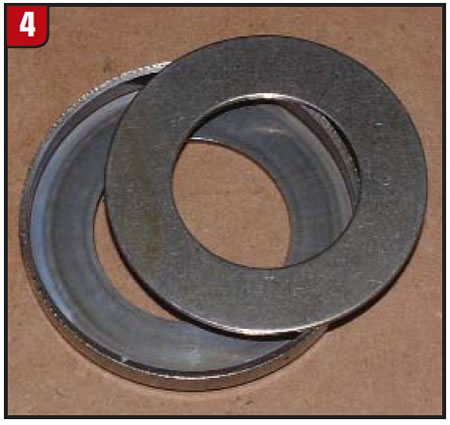
Normally you cannot put a bearing race/shim in this position because of piloting issues. In this instance, it is possible because the OE bearing-race cup is deep enough to pilot the replacement race shim and the rest of the bearing. The extra 0.039-inch thickness of the race/shim makes it possible to get the correct clutch-release clearance and overall height even with the worn cover.

Ed Lee is a Sonnax technical specialist who writes on issues of interest to torque-converter rebuilders. Sonnax supports the Torque Converter Rebuilders Association. Learn more about the group at www.tcraonline.com.
©Sonnax2011











